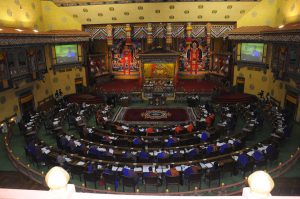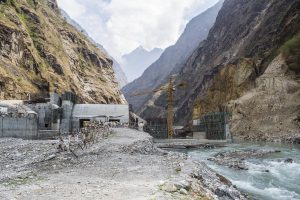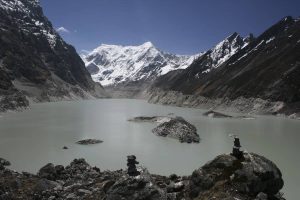The tragedy that devastated Mariana, in south-eastern Brazil, in November 2015 after a tailings dam owned by the Samarco mining company collapsed showed the “imbalance of economic priorities.” Authorities overlooked human and environmental concerns and failed to protect human rights. These were the conclusions reached by expert members of the United Nations Working Group on Business and Human Rights in Geneva last week. “We have seen in practice the imbalance between economic priorities and the preventive approach from a social and environmental point of view. It is clear that it was a preventable failure. A disaster of this nature cannot be attributed to bad luck,” said the head of the UN expert group, Dante Pesce, in an exclusive interview with Diálogo Chino. On June 16, the UN Working Group, dedicated to monitoring the performance of companies around the world and protecting human rights, presented its report to the 32nd session of the Human Rights Council in Geneva. This council will remain in session for three weeks to evaluate and discuss the world’s most pressing issues. The group of five independent experts led by Dante Pesce, the Chilean director of the VINCULAR Centre for Social Responsibility and Sustainable Development at the Catholic University of Valparaíso, visited Brazil in December 2015. This was the first time that this working group, established by the Human Rights Council in June 2011, was on assignment in a Latin American country. Pesce and his Russian colleague, Pavel Sulyandziga visited the state of Minas Gerais and met with authorities, Samarco employees, civil society groups and victims, as well as state and federal prosecutors involved in efforts to secure compensation for the victims. The group was scheduled to visit Brasília, São Paulo, Rio de Janeiro, Altamira and Belém, but because the tragedy in Mariana took place a month before the visit, Pesce was able to extend the trip. “The company underestimated the risks, ” said Pesce. “Risk prevention was poorly conducted; they underestimated the associated risks (of dam rupture) that a situation like this could generate. Company executives told us they never expected something like this could happen. The company’s initial response was extraordinarily slow. Apparently there were no protocols to deal with a situation like this, it was not even on the company’s risk map,” he said. The rupture of the dam containing mining waste affected Minas Gerais and Espírito Santo, releasing almost 60 million cubic metres of mine tailings into the Doce River. What has become the worst environmental disaster in the history of Brazil caused a deluge of mud that killed 19 people and flooded entire settlements, destroying the villages of Bento Rodrigues and Paracatu. The mud travelled more than 600 kilometres along the Doce River until reaching the coast, killing fish, fauna and flora, and causing a profound social crisis. The tragedy also affected the livelihoods and access to drinking water for a large number of people, including thousands of fishermen who directly depend on the river for their livelihoods. The tailings dam contained refuse from iron mining and was operated by Samarco, a company controlled by the Brazilian mining company Vale and the Anglo-Australian BHP Billiton, each holding half of the shares. The Chinese are major investors in Vale, one of the largest mining companies in the world. China is the main buyer of iron ore and the company also provides vessels to transport the product. In December, the Working Group warned that other spills and tragic accidents could occur, in a preview of the report. The state of Minas Gerais is home to 753 tailings dams, and 40 are considered unsafe. According to Pesce, an accident caused by human error or climate change is not only a real risk, but very likely. “Our question is whether something like this could occur again. The Samarco dam was not among those considered to be at risk; more than 30 on the list provided by the authorities would be highly dangerous if they were to collapse. If this occurred with Samarco, where prevention measures failed, taking them completely by surprise and the reaction was delayed, it is possible it may happen again,” he warned. “If Samarco failed, what can be expected of companies that are less sophisticated in their treatment of mining waste which are managing sites already in the risk category?” asked Pesce, a political scientist and also a special adviser to the UN Global Compact for Latin American public policy. There is a high risk that similar disasters occur in the near future, the report presented in Geneva warned. Pesce admitted that the report was received critically and with resistance from the Brazilian government in Geneva. Strengthening prevention The expert group recommends strengthening accident prevention and granting more supervision powers to the authorities. In Minas Gerais, only four civil servants are in charge of overseeing dams containing mining waste, one short of the number needed. “The authorities depend on the good faith of the companies”, said Pesce. In Pesce’s assessment, the Brazilian government and businesses must learn from the Samarco disaster, ensuring victims have access to justice and taking corrective action so this can never happen again. “We saw an imbalance of priorities with the emphasis on creating employment and attracting investment. Meanwhile, the preventive approach in relation to the environment and human rights is at a level of lesser importance,” he warned. “In Brazil, awareness is still low with regard to the role of companies in protecting human rights and the environment. The economic crisis in Brazil is not favourable for the balance between the need to grow and environmental concerns,” warned the UN expert. “There are interests that clash because of the urgent need to create jobs, attract investment and increase tax collection.” On June 17, the Ministry of the Environment said it had fined Samarco US$ 42 million for damages caused by the mudslide that affected three conservation areas in the state of Espirito Santo. The company was fined by monitoring agents of the Chico Mendes Institute for Biodiversity Conservation (ICMBio) for damaging the Costa das Algas environmental protection area (APA), the Santa Cruz wildlife refuge (RVS) and the buffer zone surrounding the Comboios biological reserve (Rebio). The three federal conservation areas in the state of Espírito Santo are administered by ICMBio. The mining waste was carried along the Doce River and reached the coast of Espírito Santo on November 21, forming a plume that covered protected areas. “The concentration of metals such as arsenic, lead, cadmium and copper in the buffer zone of the Comboios Rebio buffer zone as well as arsenic and lead in the Costa das Algas APA and Santa Cruz RVS were found to be at levels exceeding the maximum values determined by Conselho Nacional do Meio Ambiente (Conama) Resolution nº 357/2005,” stated head of the Santa Cruz RVS Lígia Coser in a note.




